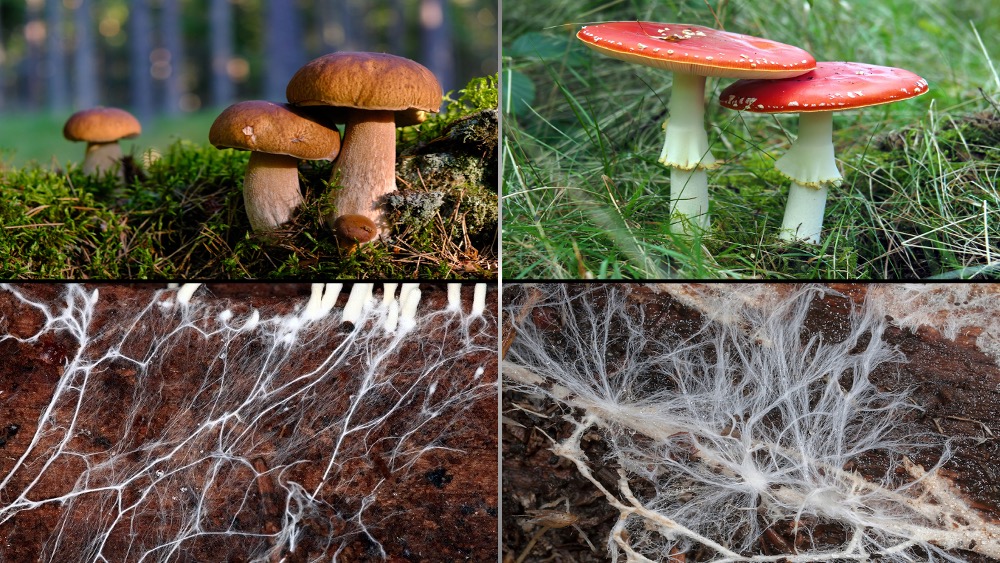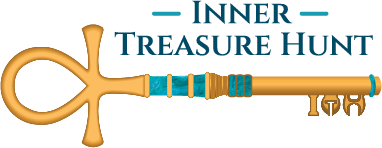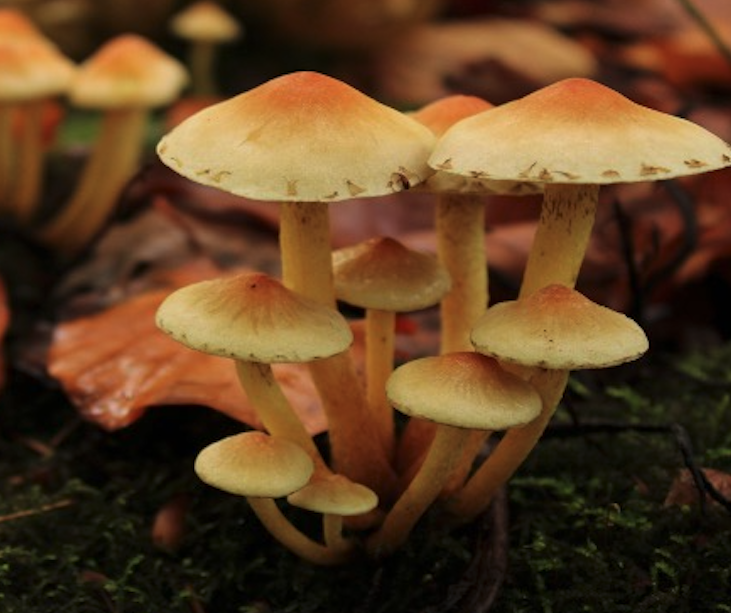If you walk around a forest and study the ground, sooner or later you’re bound to come across some mushrooms, usually growing in a dark, dense area. Mushrooms are one of the main ways that nature recycles everything, regenerating life from death! Yes they’re delicious, at least the non-toxic ones, but their most important function is invisible to us because it happens underground. So what is mycelium and why should you care?
What is mycelium?

Mycelium is the network of fine white filaments that grow out of the base of mushrooms. These long, spindly tendrils spread everywhere like spun sugar, communicating and sharing nutrients with plants and trees, eating organic matter that has died, and decomposing old substances into primordial building blocks of matter that can be shaped into new life forms. Mycelium clean and transform the natural world by breaking down organic matter and making its raw materials available again for use in the ecosystem. In many ways, mycelia are the missing link in the cycle of life and death.
Is it true there would be no life on earth without mycelium?
Yes. Without mycorrhizal networks (networks of mycelium) and their ability to break down organic substance, our ecosystem, and ultimately life itself, could not survive. Forest floors would be covered in dead trees, accumulating over time, blocking the growth of future plants, and turning into rotting piles where nothing grows. So, global ecosystem failure.
Why do healthy forests depend on mycelium?
Trees don’t live solitary lives. Science has shown that trees communicate with each other through exchanges of gas, water, carbon, nitrogen, and chemicals from root to mycelium and mycelium to root.

Trees use mycelium to support one another in their growth and protection. They use mycelium to warn other trees of diseases and pests, share stored water during periods of drought, and exchange nutrients, all with the result that the collective of trees is stronger. But mycelium is more than just a messenger. It generates nourishment, clears out toxins, transports fluids in multiple directions, and creates symbiosis with other species, all of which support ecosystem health and growth.
Science has also shown that when a sapling is detached from its network and planted apart from other trees, it fails to thrive. In forests, trees actively engage in mutual aid, especially helping saplings, the smallest and weakest amongst them. They provide this aid through the mycelium, without which forests as we know them would not exist.
Why should I care?
We all live in communities, both locally and globally, and mycelium can teach us about how to keep our communities alive, vibrant, and resilient. Trees and mycelium work together in unison for the good of all, with older, stronger trees helping saplings and other trees in need, the result being that the whole forest thrives. While science makes no claims about consciousness being involved, we can still draw analogies from the experiences of forests to answer the question “What is community?”
If a forest is a community and the trees are its members, then mycelium is the means by which the community shares information and resources, the goal being the community’s ongoing survival and protection. In a forest, if information and resources were not shared, the trees would die, so sharing keeps them alive. It’s the same in our own communities.
What is possible in my community?
We can look at mycelium’s role in the forest as inspiration for what is possible in our own communities. As noted by author Rebecca Giggs, “The portrayal of resource-sharing in the woods sounds so benevolent, so wise, in a world where inequality continues to increase. While strife and delusion travel with terrifying speed in our networked, online existence, the spectacle of intricate, protective arboreal cooperation beckons as blissful, utopian. The discovery of a covert unity and nurturance among separate trees acquires a special resonance against the backdrop of the coronavirus pandemic. What looks lone and immobile is, in fact, linked and supportive.” (A Better Way to Look at Trees: What pioneering new research has revealed about the forest, Atlantic Magazine, July/Aug 2021)
We may feel lonely at times but we are, in fact, connected to other people just as trees are connected to other trees. We’re all members of something larger than ourselves, the collective consciousness, just as trees are members of the forest. We may be unaware of our collective connections, may feel isolated, sad, or depressed, but the connections remain nonetheless and are there for us to use at any time. Our species got to where we are because of our ability to connect. Without connection, communities and individuals are stunted in their growth and development; in the forest, trees die. But when we connect with others, our communities and ourselves have a chance to thrive.
What can I do for myself and my community?
Reach out to others, in person or online. If mycelium’s taught us anything, it’s that making connections strengthens the whole. Mycelium provides an essential web of life that ties ecosystems together to strengthen and protect them. As humans, our ecosystems include the communities in which we live, both locally and globally. Whether we know it or not, we have vast invisible connections to other people and collectively to all of humanity on earth. Our survival depends on each other, and our connections to other people keep us healthy and safe. Our lives are so intertwined with others that we could not sustain life as we know it alone.
Join a forest of like-minded trees. Be the mycelium by helping others share information and resources that strengthen ecosystem. Remember that mycelium enables saplings to reach maturity, breaks down harmful toxins, and creates new life forms out of the transubstantiation of dead matter. We might think of this as nurturing the youngest and most vulnerable among us, protecting our physical, mental, and emotional environments from toxic elements, and creating ways to recycle things into new manifestations so we can continually connect, support, and protect each other.
We’re in this together and there is no limit to the essential web of life in which we exist. Remember that while trees may look lone and immobile, they are actually linked and supportive. And while we may sometimes feel lone and immobile, we are actually linked and supported when we reach out to others.
Resources
Learn more about mycelium and the work of Paul Stamets by watching the film Fantastic Fungi.
Learn more about the magic of forests by reading: “A Better Way to Look at Trees: What pioneering new research has revealed about the forest” by Rebecca Giggs, Atlantic Magazine, July/Aug 2021. . . . . . . .“Finding the Mother Tree” by Suzanne Simard, published by Knopf, May 4, 2021.
Learn more about the forces of nature at Summer Solstice: Culmination of Light of the Year, What is the Meaning of the Winter Solstice and Why is it Important?, Venus Conjunct Mars, Feminine Energy Rises, The Science Behind Sound Healing: Pioneer John Stuart Reid, and the Powers of the Moon Series.
Learn more about mycelium at Wikipedia.
Learn more about community at Wikipedia.
Learn more about the forces of nature, community, and the subconscious at Inner Treasure Hunt. If you liked this post, you can subscribe to the Inner Treasure Hunt newsletter to stay informed about new posts, programs, and events.
Please share this post with your friends! Just click below.

